The Biden Administration Cancels Its Offshore Drilling Plan for Alaska’s Cook Inlet—Let’s Keep It Off the Books
The lease sale would have endangered Indigenous communities, threatened rare whales, added to the Far North’s climate crisis, and gambled with a 20 percent chance for a large oil spill.
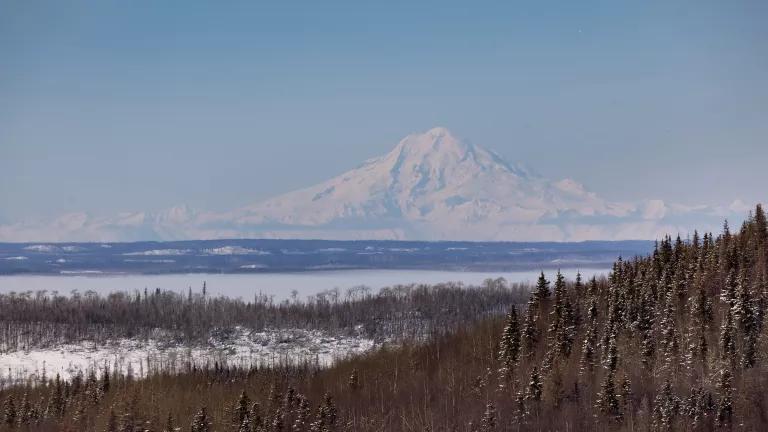
A view from Skilak Lake Road across Cook Inlet to Mount Redoubt
UPDATE: On July 16, 2024, a federal district court judge suspended a Cook Inlet oil and gas lease in response to a lawsuit filed in December 2022 by NRDC and a coalition of local and national environmental groups. The court ruled that the U.S. Department of the Interior failed to fully consider the potential wildlife harms and other environmental risks that could result from the sale, halting activity in the lease area until the agency completes a revised environmental analysis.
Marine biologist Tamara McGuire launches her boat into Alaska’s Cook Inlet every summer day. With snow-capped volcanoes in the distance, she motors along, on the lookout for the white whales that ply the inlet’s chocolate-milk-colored waters. Here, tides can shift up to 35 feet in a day, and glacial silt makes the water so opaque that if you were to submerge your hand, you wouldn’t be able to see your fingers. The inlet’s cetaceans are a unique and endangered population of belugas that have adapted to these extreme conditions. Yet over the past 50 years, the whales’ numbers have plummeted from around 1,400 to fewer than 300. Nobody knows exactly why.
“They can’t relocate; they’ve evolved there over thousands and thousands of years in conditions that are already very harsh,” says McGuire, who has been studying the whales since 2006 as the lead researcher of the Cook Inlet Beluga Whale Photo-ID project. “It’s not like they have any other option.”
Cook Inlet is Alaska’s oldest-producing oil and gas basin, but the last thing the place needs is more offshore drilling. So when the Biden administration decided this week to cancel its proposed lease sale that would have auctioned off a million acres of lower Cook Inlet to fossil fuel interests, Indigenous communities, environmental groups, and whale biologists like McGuire sighed in relief. Still, there’s a chance the threat could pop up again when the Biden administration releases its new five-year plan for oil and gas development as early as next month. Here’s why offshore drilling in lower Cook Inlet would still be a terrible idea.
The Bureau of Ocean Energy Management’s (BOEM) own environmental analysis estimates drilling operations could emit 88.3 million tons of carbon dioxide over the next three decades—about the equivalent of a year’s worth of emissions from 19 million cars. This is not a good idea for Alaska, where over the last six decades, temperatures have been rising twice as fast as other parts of the United States.
Even more immediately, the risk of an oil spill, akin to the Exxon Valdez or worse, the BP Deepwater Horizon disaster in the Gulf, hangs heavy over the Indigenous peoples who have been living amid the rare belugas and relying on this rich ecosystem for millennia.

“We have a saying: Kenesgangqan awa stuululuimauq—when the tide is out, the table is set,” wrote John Kvasnikoff, chief of the Village of Nanwalek, earlier this year in a Washington Post op-ed. He, along with many other Indigenous leaders, called on President Biden to cancel the lease sale. “We pry mussels off the rocks. We coax octopus from dens. We dig clams. We harvest kelp and other seaweeds. Sometimes we’ll take a skiff to catch halibut or rockfish, or head up the river for salmon.”
Despite strong opposition from tribes and conservation groups—and despite President Biden’s own campaign pledge to prevent further offshore drilling in federal waters—last October, the BOEM released its draft environmental impact statement (EIS) for Lease Sale 258, a key step in the leasing process. This week, the administration decided to not move forward, citing a “lack of industry interest in leasing the area.”
“We're very concerned that our government should be doing better in talking to tribes and asking them what they want for these lands they've managed from time immemorial,” says Liz Mering, advocacy director and inletkeeper at Cook Inletkeeper, a local environmental organization. She adds that the government didn’t even contact many of the 20 tribes and native groups that the lease sale would have affected.
The communities around Cook Inlet are right to worry. According to the government’s own data, offshore drilling in the area comes with a 20 percent chance that a large oil spill, defined as one of 42,000 gallons (1,000 barrels) or more, will happen.
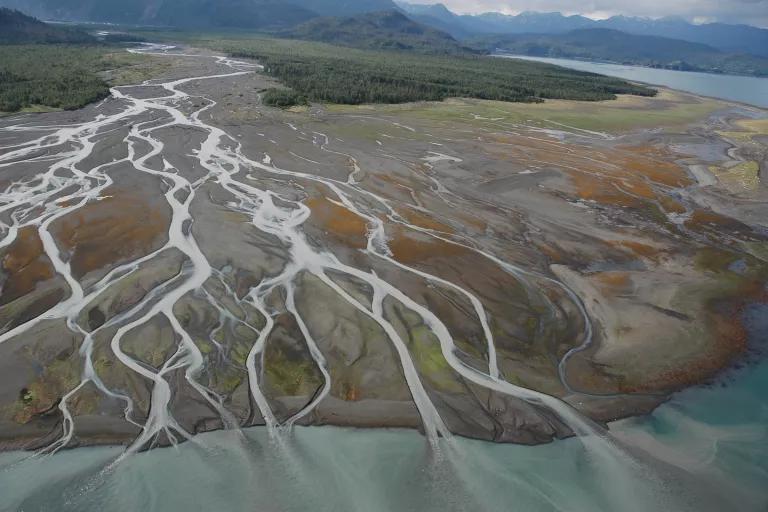
Not a risk worth taking
Susan Lubetkin, a former biologist and statistician turned independent consultant, is an expert at analyzing environmental risk. She spent five years poring over BOEM’s oil spill analyses for drilling in Alaska’s Beaufort and Chukchi seas and found that the agency “grossly underestimated” threats to the area’s environment.
When asked to conduct a similar review of BOEM’s oil spill analysis of drilling in lower Cook Inlet, Lubetkin also found flaws. Though the most recent Cook Inlet analysis is standard, focusing on the potential effects of large spills on particular areas, it does not evaluate how the inlet as a whole would fare.
“Anything going on in one area of the inlet could affect the whole thing,” says McGuire. “We’re adding layers of human activity and disturbance, either directly or indirectly, through changes to the ecosystem or from climate change. We’re messing with a finely tuned balancing act.”
Another problem with the BOEM analysis is that it only looks at the impact of an oil spill and not other potential pollutants. After reviewing a publicly available database of oil industry spills in Alaska, Lubetkin found that only 27 percent of the spills that occurred in Cook Inlet between 1995 and 2020 involved oil, and oil accounted for only a third of the total volume of these spills. Because the oil industry spills more than oil, Lubetkin says the BOEM should also evaluate the impacts of other contaminants, such as ethylene glycol and hydraulic oil.
Furthermore, the BOEM used oil spill data from the Gulf of Mexico instead of state-compiled data to conduct its risk analysis. The two regions have vastly different weather, temperature, and ecological conditions, and therefore, an oil spill would affect these places in varying ways.
“I'm just using public data, with the same techniques BOEM has used for other places, to incorporate local knowledge and experience,” says Lubetkin. “In this case, the federal agency didn’t do that, but the information is there.”
And let’s not forget about how climate change factors into these risks. The BOEM’s EIS also fails to consider how the inlet’s tides and currents, altered by a changing climate, would move the spilled oil around. Stronger and more frequent storms could also change projections of where oil, or other pollutants, might wash up.
Last year, Lubetkin published a peer-reviewed paper in Marine Pollution Bulletin pointing out the issues with the government’s oil spill analyses and making a case for the agency to change its practices. “The goal of NEPA [National Environmental Policy Act] and the EIS process is to make informed decisions…the whole process isn't necessarily to make the most environmentally protective decision,” Lubetkin says. “A lot of this comes down to how you value the environment, often by placing a dollar amount on it.”
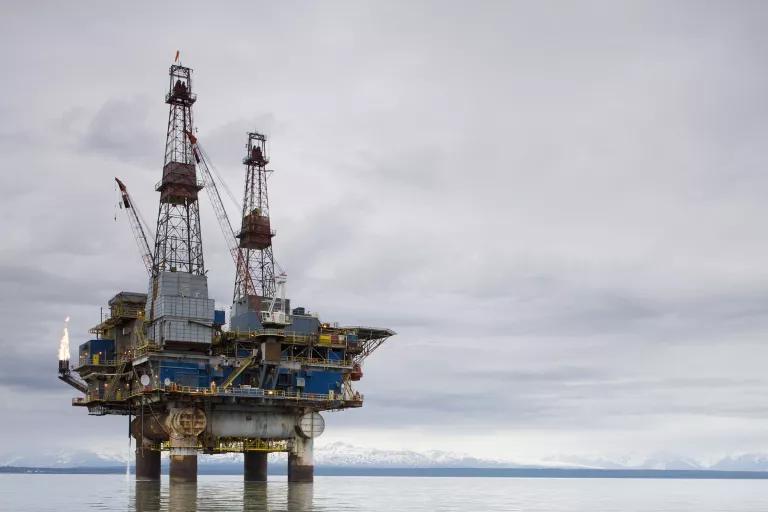
Follow the money
A likely bidder for the federal lease 258 would have been Hilcorp, an oil company that controls nearly 70 percent of the hydrocarbon development in Cook Inlet. Both the state and the U.S. Environmental Protection Agency (EPA) have repeatedly cited Hilcorp for environmental violations. Just last year, the company was responsible for an onshore 8,000-gallon leak of slop oil, which is unsellable crude emulsified with oil and solids, from an underground line. Even more recently, the EPA fined the company more than $180,000 for taking too long to fix gas leaks in Cook Inlet as well as along Alaska’s North Slope.
Based on its track record, “Hilcorp is more interested in the money that can be made on natural resources and less about the stewardship of those resources,” says Alyssa Sappenfield, an energy analyst with the Alaska Public Interest Research Group and the Fairbanks Climate Action Coalition.
The consequences of opening the area to drilling, of course, go beyond Alaska. Allowing oil companies to lease lands and waters for a decade further entrenches the fossil fuel industry at a time when the country should be going full speed ahead on renewable technologies.
And while the war in Ukraine and the resulting oil price spikes have led the Biden administration to call for more drilling, the move is short-sighted and unnecessary. Enough oil comes out of the ground today to meet our country’s energy needs for decades to come, says Irene Gutierrez, a senior attorney with NRDC who is working to stop offshore drilling and fossil fuel infrastructure development. “Part of the price crisis today is because of measures that energy companies are taking,” she says. “They are doing what they do best: manipulating markets to their end.”
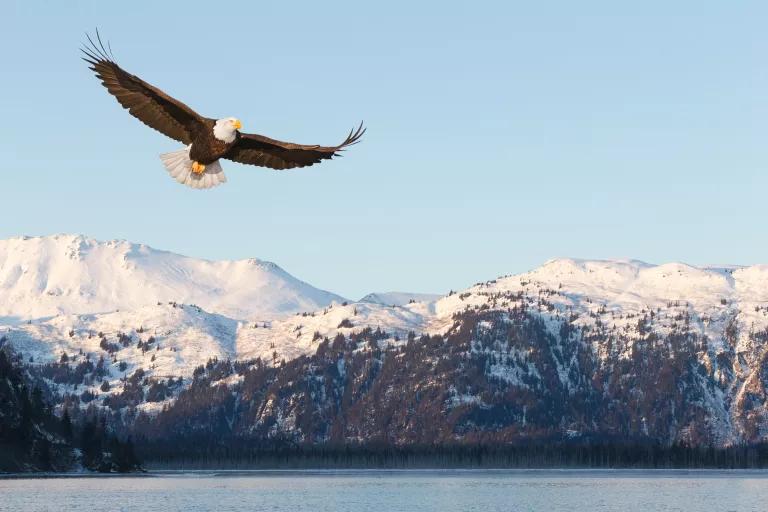
Historical corrections
Nearly 50 years ago, when Alaska was planning to lease sections of Kachemak Bay in lower Cook Inlet for oil and gas drilling, a damaged jack-up rig used by Standard Oil for exploratory drilling sat in the bay. The legs of the rig, named the George Ferris, sank into the soft inlet floor, and the crew trying to remove the rig couldn’t suck two of the legs from the 18 feet of mud. The jack-up system broke in the process, preventing the crew from raising the structure. When the rising tide washed over the rig, an oily ribbon of diesel rippled across the water’s surface.
“The water swamped the decks, so after that, all hell broke loose,” says Michael O’Meara, a conservationist who worked with Kachemak Bay Defense Fund at the time. “The community was really up in arms, even the people who had been previously lukewarm about drilling.”
The disaster led legislators to vote on a measure to buy back the state leases, a bill that had been virtually dead in the water just weeks prior. In the decades that followed, the tourism industry around Kachemak Bay thrived. Thousands of visitors from around the world now come to the area to see the belugas, other whales, and nearby glaciers.
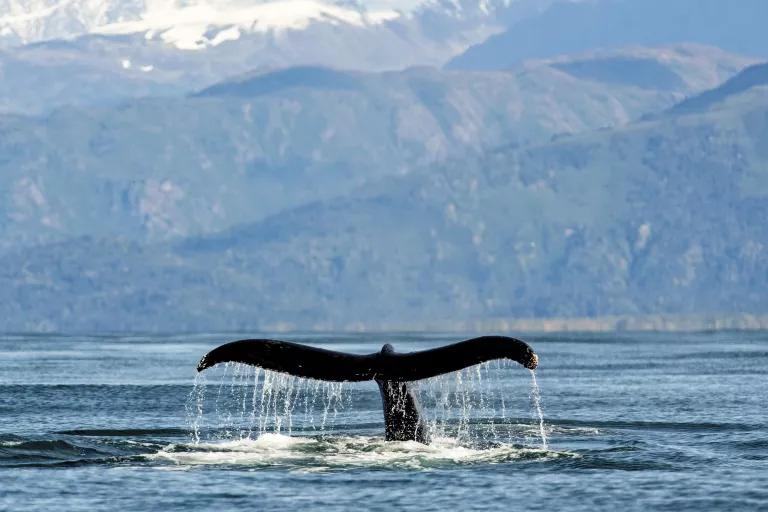
“If we’d had production drilling, the economy and the society around here, the whole culture would be completely different,” says O’Meara, who has lived in the area since the late 1960s.
In contrast, should the threat rise again for lower Cook Inlet in the administration’s upcoming five-year drilling plan, a spill could mirror the 1989 Exxon Valdez disaster that sent 11 million gallons of Prudhoe Bay crude into the Prince William Sound. The oil drifted into Cook Inlet and the Gulf of Alaska, smothering salmon, sea otters, orcas, and more than 30,000 birds. Fishermen who could no longer make a living took jobs with the company tasked with cleanup. Crews blasted rocks with hot water to remove the oil, killing even more small wildlife. The local tourism industry, of course, floundered.
For six years after the Exxon Valdez wreck, many of the local tribal people couldn’t hunt seals or harvest kelp from the sea. The catastrophe tattered the cultural fabric of Indigenous communities, says Nancy Yeaton, a tribal citizen of Nanwalek. “The stories quit flowing. When you're sitting with a group of people and you're eating your traditional foods, the foods that you were raised on, stories come out. Laughter comes with it…kids continue to hear these stories. When that oil spill occurred, that really stopped for a while. All of a sudden, our lives in Nanwalek kind of came to a halt,” she says.
“If this lease goes on, it’s only going to add more damage.”
This story was originally published May 13, 2022, and has been updated with new information and links.
This NRDC.org story is available for online republication by news media outlets or nonprofits under these conditions: The writer(s) must be credited with a byline; you must note prominently that the story was originally published by NRDC.org and link to the original; the story cannot be edited (beyond simple things such as grammar); you can’t resell the story in any form or grant republishing rights to other outlets; you can’t republish our material wholesale or automatically—you need to select stories individually; you can’t republish the photos or graphics on our site without specific permission; you should drop us a note to let us know when you’ve used one of our stories.
U.N. Report: A Million Extinctions and Ecological Collapse Are on the Way
Biodiversity 101
That Summer When Climate Change Baked Alaska
U.N. Report: A Million Extinctions and Ecological Collapse Are on the Way
Biodiversity 101
That Summer When Climate Change Baked Alaska
U.N. Report: A Million Extinctions and Ecological Collapse Are on the Way
Biodiversity 101
That Summer When Climate Change Baked Alaska
U.N. Report: A Million Extinctions and Ecological Collapse Are on the Way
Biodiversity 101